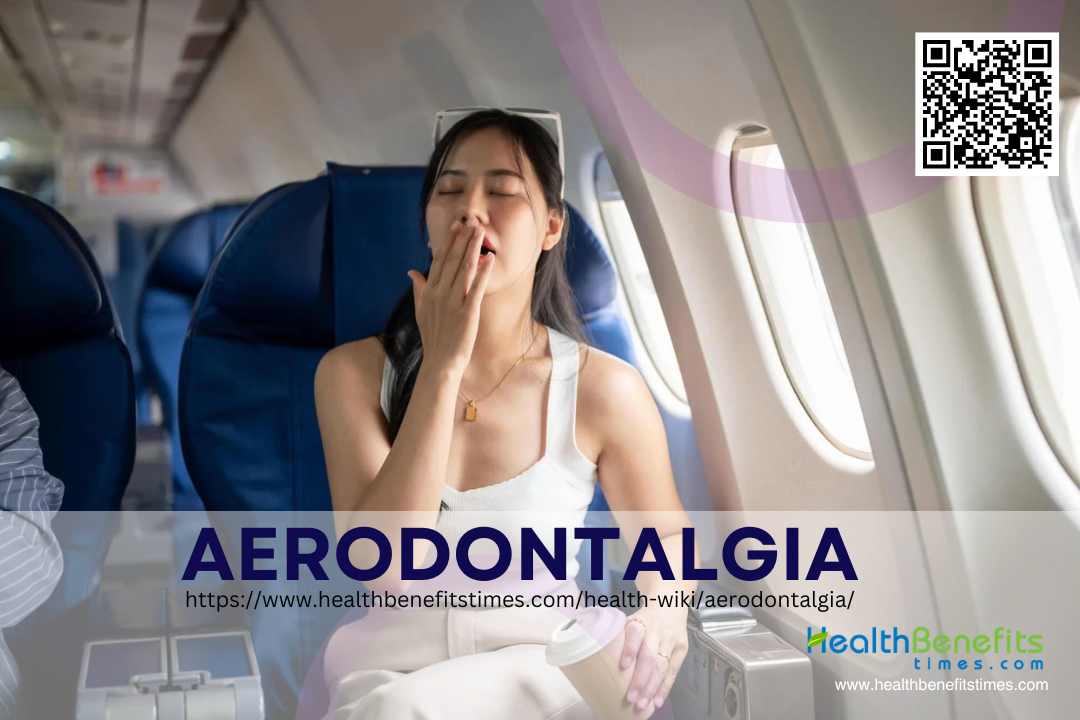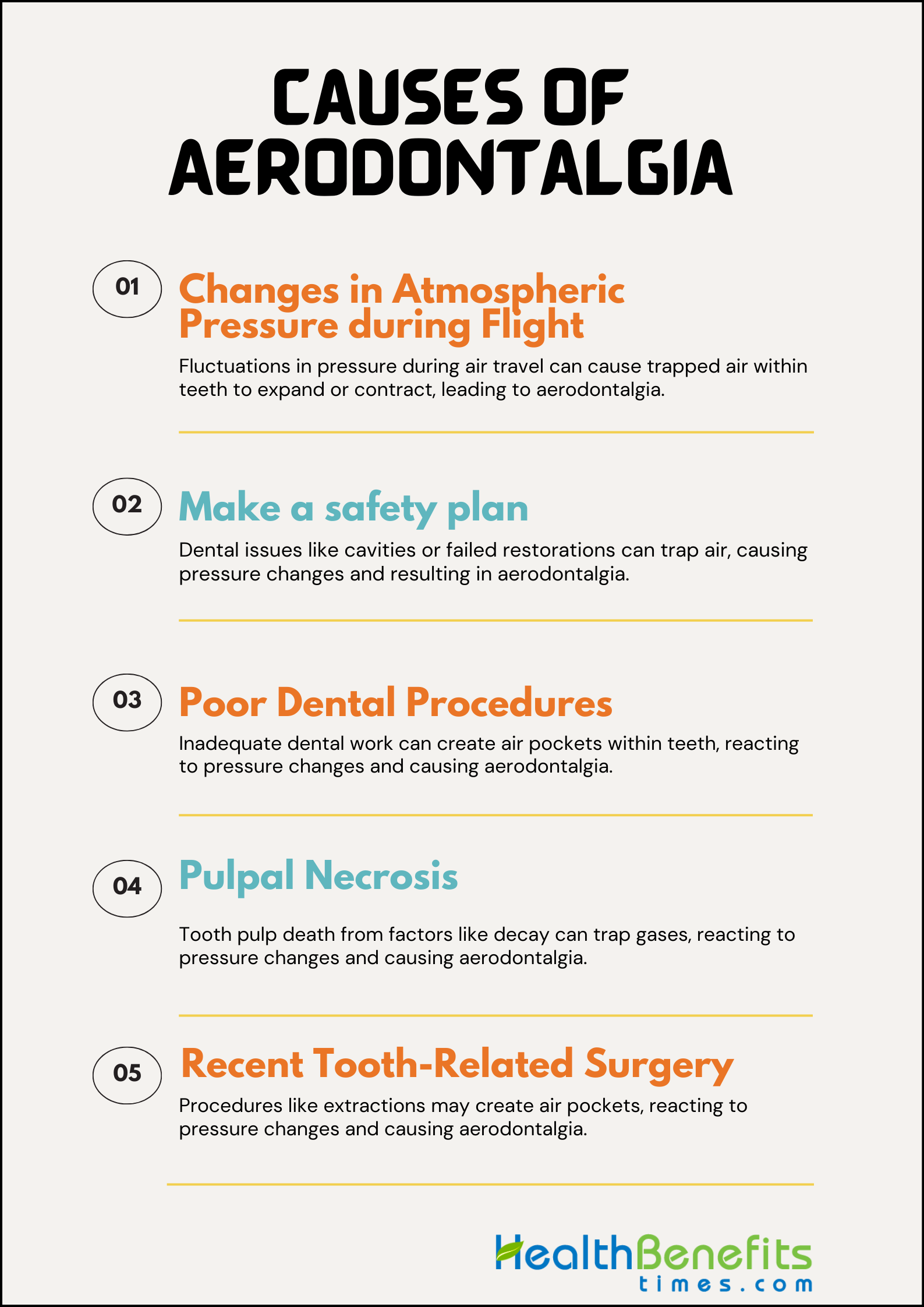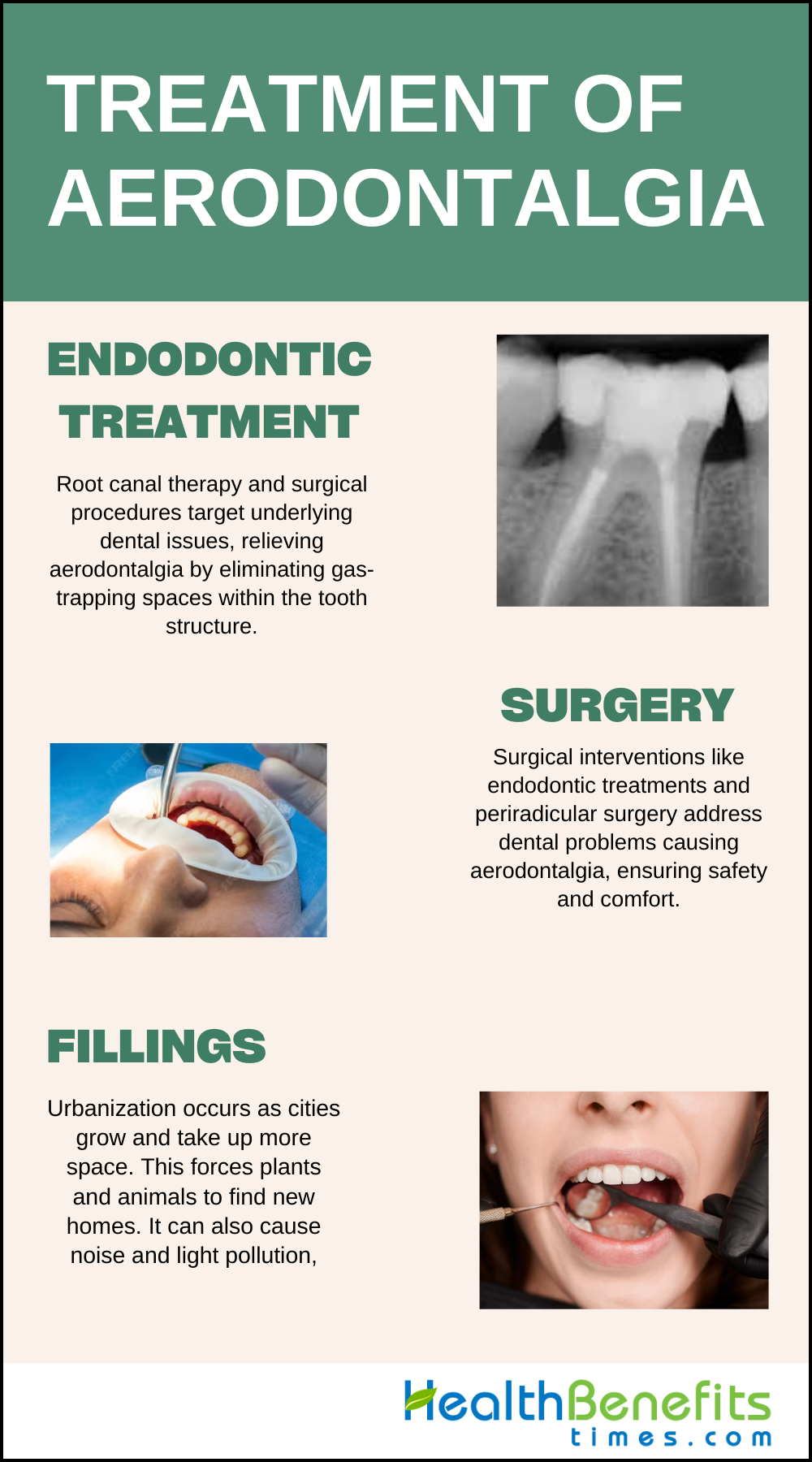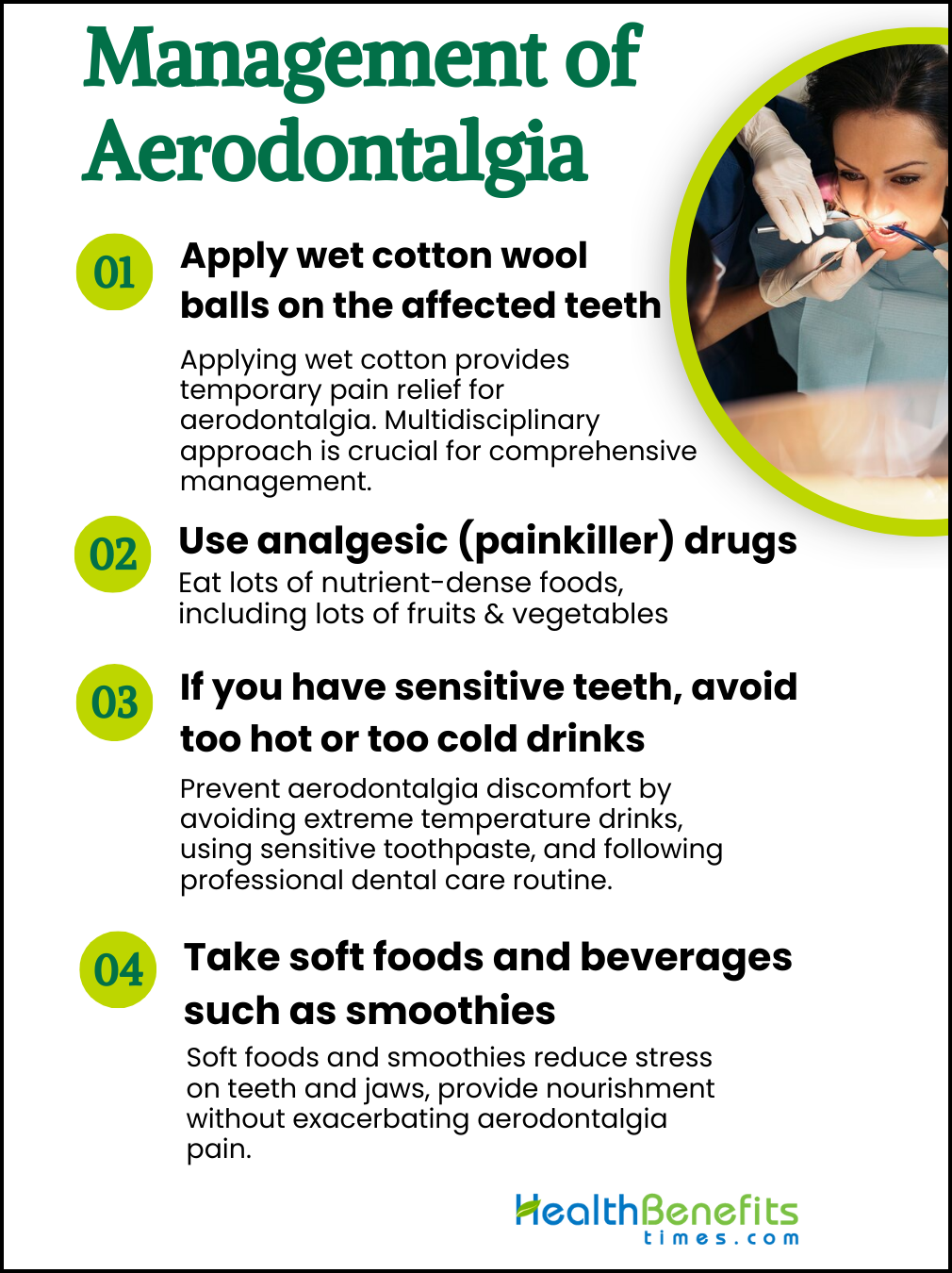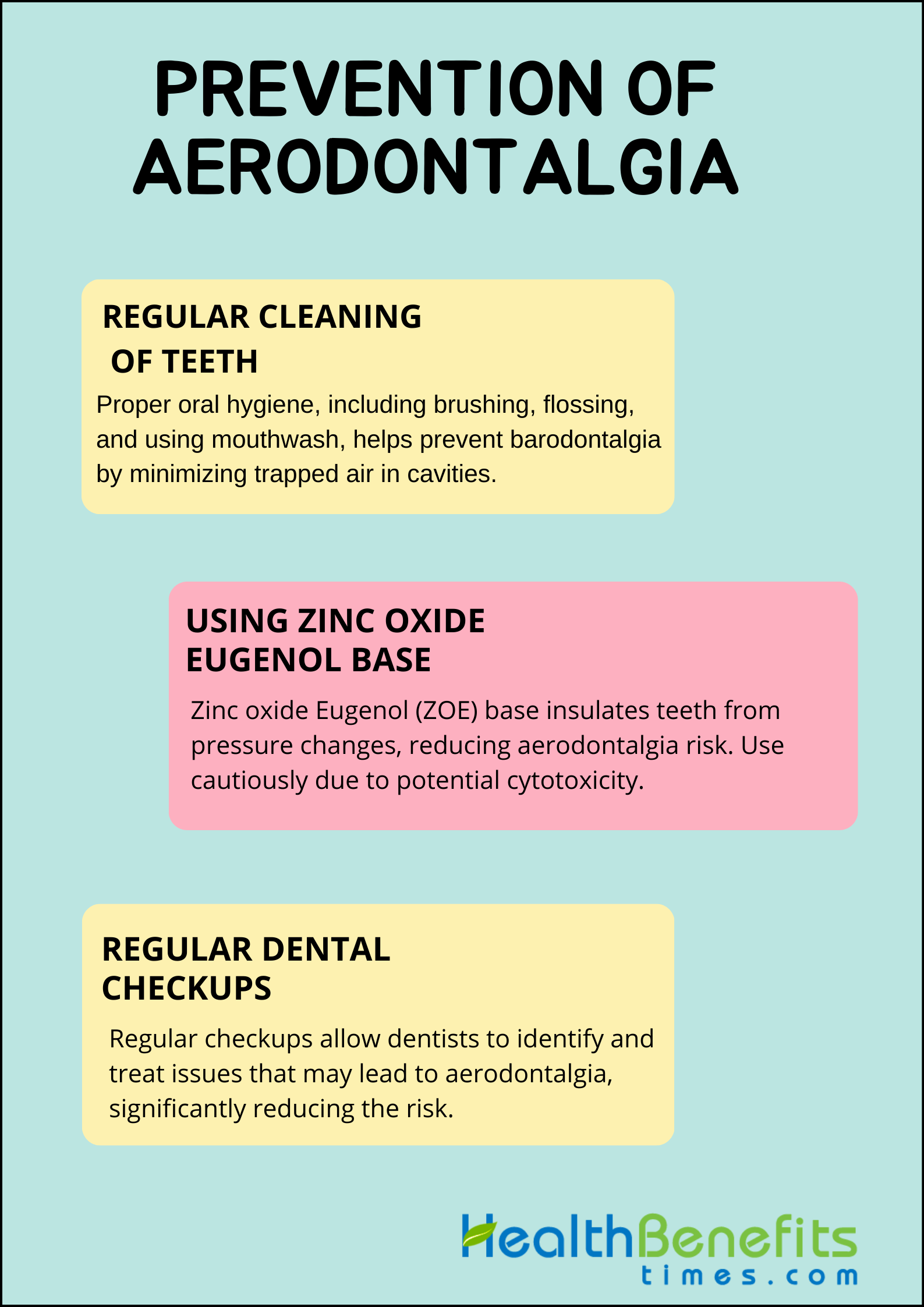Aerodontalgia, a condition more commonly known as “flyer’s toothache,” refers to the sudden onset of tooth pain or discomfort experienced by individuals exposed to changes in atmospheric pressure, typically during flights or underwater activities such as scuba diving. The term “aerodontalgia” is derived from the Greek words “aero” (air) and “odontalgia” (toothache), highlighting the link between dental pain and air travel. The phenomenon was first reported in the early 20th century by L. Gires, a French dentist who described the dental pain experienced by aviators during World War I. Since then, the condition has been studied extensively, leading to a better understanding of its causes, symptoms, and management strategies, as well as increased awareness among dental professionals and the development of preventive measures for those frequently exposed to changes in atmospheric pressure.
Causes of Aerodontalgia
The interaction between changes in atmospheric pressure and individual dental anatomy creates the conditions for this specific type of discomfort. Understanding the root causes is crucial for both preventing and treating aerodontalgia. In the following discussion, we will examine the main factors that make individuals more susceptible to aerodontalgia, including the quality of dental restorations, the presence of trapped gases in dental cavities, and how dental tissues respond to sudden changes in the environment.
1. Changes in atmospheric pressure during flight
During air travel, changes in atmospheric pressure can cause trapped air within dental cavities or around fillings to expand or contract, potentially leading to significant pain, a condition known as aerodontalgia. This phenomenon is governed by Boyle’s Law and is more common in individuals with recent dental work, infections, cavities, or poorly fitted dental appliances due to the presence of air pockets that react to pressure changes. Preventive measures, such as dental check-ups before flying and managing sinus congestion, can help mitigate the risk of developing aerodontalgia.
2. Decaying teeth
According to article, Aerodontalgia is primarily caused by pre-existing dental issues, such as deep caries, pulp necrosis, or failed dental restorations, which can harbor air pockets or allow the ingress of gases and bacteria. In decaying teeth, the compromised enamel leads to the formation of cavities, and as external pressure fluctuates, the trapped gases can expand or contract, exerting pressure on the nerves within the tooth structure, causing pain. This condition is more likely to occur in teeth with extensive decay or defective restorations, where the imperfect seal between the tooth and the restoration allows air to become trapped.
3. Poor dental procedures
Inadequate dental procedures, such as improperly placed dental fillings, incomplete root canal treatments, or poorly fitting dental crowns, can result in small air pockets or gaps within the teeth or restorations. Changes in external pressure during flights or dives can cause the trapped air in these spaces to expand or contract, leading to discomfort or pain, a condition known as aerodontalgia. It is important to receive high-quality dental treatments, precise procedures, and regular check-ups to reduce the risk of aerodontalgia related to substandard dental interventions, especially for individuals who frequently experience significant changes in altitude.
4. Pupal necrosis
Pulp necrosis, the death of dental pulp tissue due to factors such as deep caries, failed restorations, or inflammatory lesions, can trap gases that expand or contract with changing atmospheric pressures during activities like flying or diving. This movement of gases within the necrotic pulp can cause severe pain and discomfort, a condition known as aerodontalgia. Despite improvements in flight conditions, aerodontalgia remains a significant issue for aviation professionals, including pilots and passengers. Proper diagnosis and treatment of aerodontalgia caused by pulp necrosis, as well as preventive dental care, are essential to ensure the health and performance of individuals exposed to pressure changes. It is important to address this dental problem among those who frequently experience changes in altitude.
5. A recent tooth-related surgery
Recent dental procedures, such as extractions or root canals, may result in the formation of air pockets in the treated areas. When individuals who have recently undergone such procedures experience significant changes in altitude, such as during flights or scuba diving, these air pockets can expand or contract. This can lead to discomfort or pain in the affected tooth, a condition known as aerodontalgia or “tooth squeeze.” This phenomenon is similar to barotrauma affecting other body cavities and is caused by the inability of the trapped air within dental voids to equalize with external pressure changes, resulting in painful sensations. Allowing sufficient time for proper healing and consulting a dental professional before participating in activities involving pressure changes can help reduce the risk of developing aerodontalgia following recent tooth-related surgeries.
Treatment of Aerodontalgia
Individuals who are struggling to Aerodontalgia can benefit from a variety of strategies that target the root causes and provide relief during episodes. Treatment options range from using specialized dental devices to modifying behaviors during flights, and they are customized based on the severity and frequency of symptoms. In the following sections, we will outline and examine these different treatments, providing an understanding of how each approach helps alleviate the pain and pressure associated with aerodontalgia.
1. Endodontic treatment
Endodontic treatment, which includes root canal therapy and periradicular surgery, is essential in effectively managing aerodontalgia. This condition, characterized by severe tooth pain during flights due to pressure changes, is often caused by underlying dental issues such as pulpitis or necrotic pulp. Root canal therapy involves removing the affected dental pulp, which contains nerves and blood vessels, to eliminate the space where gas can expand. The tooth is then cleaned, disinfected, and sealed. By addressing the root cause within the tooth’s structure through precise endodontic treatment, individuals can find relief from acute tooth pain during flights and prevent future episodes of barodontalgia. This underscores the importance of dental care in managing aerodontalgia.
2. Surgery
Aerodontalgia, also known as barodontalgia, is a condition characterized by dental pain caused by changes in atmospheric pressure experienced during flights or in high-pressure environments. This condition commonly affects aviators and divers. Surgical interventions, such as endodontic treatments and periradicular surgery, are crucial in effectively managing aerodontalgia. These procedures target underlying dental issues such as necrotic pulp, diseased teeth, or faulty dental work that may trap air pockets or infections. Endodontic treatments involve root canals to remove diseased pulp, while periradicular surgery seals lesions around the tooth root, preventing recurrent episodes of barodontalgia. By promptly addressing the root causes through surgical procedures, these interventions aim to alleviate acute dental pain, ensure overall safety and comfort, and reduce the risk of aerodontalgia-related incidents in individuals exposed to rapid pressure changes. Proper postoperative care and assessment of fitness to return to high-pressure environments are essential to prevent the recurrence of symptoms.
3. Fillings
According to article, The treatment of aerodontalgia, focusing on dental fillings, is essential for managing dental problems associated with high-altitude activities such as flying and scuba diving. Military pilots are at a higher risk of experiencing pressure-related dental pain, often caused by pulpitis related to deep restorations. Proper diagnosis and treatment, including endodontic procedures using advanced techniques and high-quality, well-adhered fillings like composite resins, are crucial. These fillings should be free of gaps or flaws that could trap air and expand or contract under pressure changes, leading to pain. The goal of treatment is to restore the structural integrity of the tooth, eliminate potential air-trapping spaces, and reduce the risk of tooth pain during pressure fluctuations. Regular dental check-ups and prompt treatment of dental issues are also important in preventing aerodontalgia and ensuring the well-being of aviators and divers.
Management of Aerodontalgia During Flight
As passengers reach cruising altitudes, the management of aerodontalgia, a condition triggered by changes in cabin pressure, becomes a significant concern for both individuals and flight crew. Addressing this discomfort is not only about relieving pain but also an essential aspect of in-flight healthcare. To ensure a comfortable journey for those affected, a range of strategies can be utilized. These strategies include preventive measures before the flight and specific in-flight interventions. The following list outlines the most effective options for managing aerodontalgia, with the goal of providing relief and enhancing the overall flight experience for travelers prone to this condition.
1. Apply wet cotton wool balls on the affected teeth
The application of wet cotton wool balls to the affected teeth can provide temporary relief by mitigating the pain associated with aerodontalgia until definitive treatment can be administered. Understanding and recognizing this condition is crucial for military and civilian dentists to ensure accurate diagnosis and timely management, safeguarding the well-being of aircrew members.
2. Use analgesic (painkiller) drugs
Analgesics like non-steroidal anti-inflammatory drugs (NSAIDs), aniline analgesics, and opioids play a crucial role in managing odontogenic pain, with NSAIDs being highlighted as particularly effective for post-surgical pain. The choice of analgesic depends on the severity of pain, with mild to moderate pain often alleviated by acetaminophen and NSAIDs like ibuprofen, while stronger opioids are reserved for severe cases. For individuals prone to aerodontalgia, it is crucial to consult with dental professionals before flights or diving activities to discuss appropriate pain management strategies, medication dosages, and preventive measures such as the use of a dental splint, ensuring a more comfortable experience during altitude changes.
3. If you have sensitive teeth, avoid too hot or too cold drinks
Consuming drinks at extreme temperatures, whether too hot or too cold, can trigger sharp, transient pain due to the rapid expansion or contraction of gases trapped in dental cavities or crevices. Therefore, it is advisable to opt for beverages at mild temperatures. Additionally, using toothpaste formulated for sensitive teeth, following a dental care routine recommended by a professional, and avoiding extreme temperature drinks can further aid in managing the sensitivity associated with aerodontalgia and prevent exacerbation of symptoms.
4. Take soft foods and beverages such as smoothies
Smoothies, in particular, are an excellent choice as they can be packed with nutrients while being gentle on the oral cavity. They provide a soothing, cool sensation that can help alleviate pain, and their customizable nature allows for a variety of flavors and ingredients to suit individual dietary needs and preferences. By incorporating smoothies into the diet, patients can maintain nourishment without exacerbating dental pain, aiding in a more comfortable and manageable recovery process.
Prevention of Aerodontalgia
From preparing before a flight to taking measures during the flight and providing care after the flight, there are a range of options to prevent this discomfort that are tailored to each individual affected by Aerodontalgia. In the following sections, we will examine a range of preventive measures designed to address the specific challenges presented by changes in atmospheric pressure during air travel, to help passengers maintain their oral health and comfort throughout their journey.
1. Regular cleaning of Teeth
According to article, regular cleaning of teeth through good oral hygiene practices, such as brushing twice a day, flossing daily, and using an antiseptic mouthwash, plays a crucial role in preventing barodontalgia, a toothache induced by changes in atmospheric pressure during flights or dives. Studies emphasize the significance of proper dental care, highlighting the need for periodic oral assessments and treatments to minimize the risk of trapping air in dental cavities or gum pockets, which can expand and contract with pressure changes, leading to pain among aviation professionals and divers.
2. Using Zinc oxide Eugenol base
According to article, Zinc oxide Eugenol (ZOE) based materials have been found to be effective in preventing aerodontalgia, a condition characterized by dental pain during changes in atmospheric pressure. ZOE is a dental material with analgesic and antiseptic properties that can be used as a temporary filling or lining under restorations. When applied to a cavity or as a base under a restoration, ZOE helps to insulate the tooth from thermal and pressure changes, reducing the likelihood of aerodontalgia. Its sedative effect on the pulp also contributes to minimizing the potential for pain triggered by pressure differences during altitude changes. However, research has shown that ZOE sealants can have cytotoxic effects due to eugenol release, and it is crucial to consider the potential inflammatory responses in soft tissues when using ZOE-based filling materials, emphasizing the importance of proper application techniques. Incorporating ozone into ZOE sealers has been proposed as a way to enhance their properties, such as increasing pH levels and improving biocompatibility. Overall, utilizing Zinc oxide Eugenol base with caution and considering advancements like ozonation can contribute to preventing aerodontalgia and improving dental treatment outcomes.
3. Regular dental checkups
According to article, Regular dental checkups are one of the most effective preventative measures against aerodontalgia, a condition characterized by tooth pain during air travel or scuba diving. These checkups play a crucial role in averting aerodontalgia episodes by allowing dentists to identify and treat potential issues such as cavities, cracked teeth, or restorations that may harbor air pockets, which could expand or contract with pressure changes. By addressing these dental concerns early through regular checkups, the risk of experiencing aerodontalgia can be significantly reduced, ensuring a more comfortable experience for individuals susceptible to pressure changes during flights or underwater excursions.


